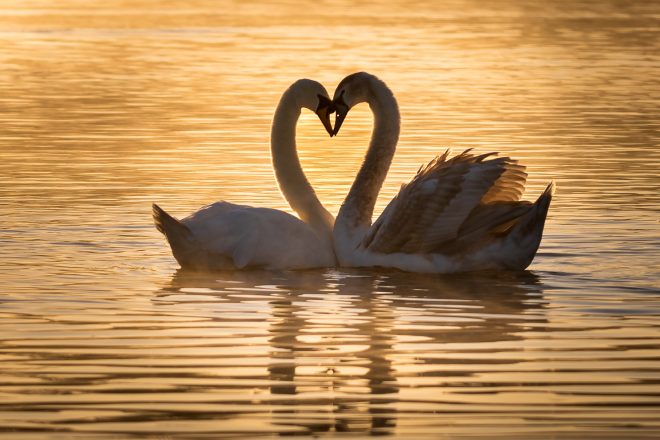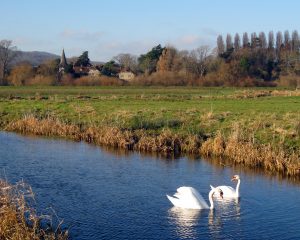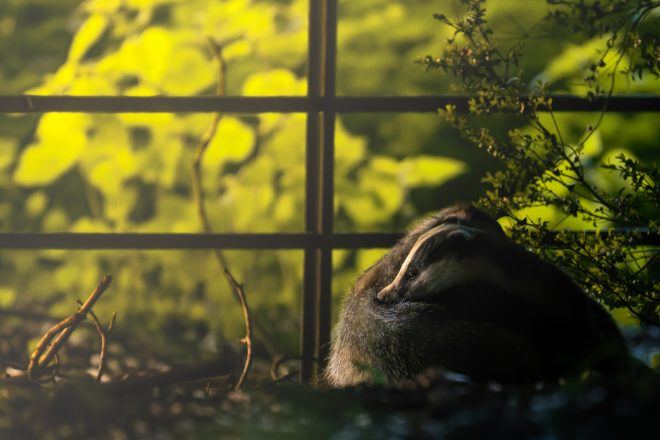Animal love stories in the South Downs National Park
February 12, 2024

Beneath the stars of the South Downs is a beautiful place to fall in love.
With our Dark Night Skies Festival in full flow this week, why not surprise a loved one with an evening out to marvel at the night sky wonders?
And while you’re staring up, have a think of all the wildlife in the South Downs who might just be sharing that loving feeling with you this Valentine’s Day…
Did you know that it’s not just humans who find monogamy attractive?
Many animal species across the globe find their soulmate and stay together for the entirety of their lives, often facing long times apart while partners forage for food or look after the young.
Here are some of the lovers for life who you might spot while out and about in the South Downs, and a few facts about how our animal friends also experience the trials and tribulations of love.
And let’s not forget there’s the platonic love between family and friends – in both the human and animal world – that is just as sweet!
Mute Swans

These graceful birds are a familiar site across the National Park, often found gliding across water in parks or rivers.
Being the largest and heaviest water bird, they also have the biggest hearts for love as they pair for life.
Often choosing to nest in areas where there is an abundance of food such as common duckweed, paired swans usually remain in the same area for their whole lives too, making a loving home for their broods to grow up in.
If both swans remain healthy they usually stay together for life.
Although like in all relationships there is the risk of change as sometimes a new, stronger cob (male) coming on the scene can force a change of partner for some female swans.
With territorial disputes sometimes leading to nasty fights to the death, the female swans generally go through a period of mourning before moving on to a new fella.
Pigeons
These unassuming birds have a loving side that’s rarely acknowledged. Mating for life, pigeons spend the majority of their time together – so if you see one pigeon bobbing around, you’ll likely spot their mate nearby.
They also have a ritualistic mating process, with various stages of courtship, some involving dances not too dissimilar to those witnessed in human night clubs on a Friday night…
Pigeons remain faithful to each other until death do them part.
However, they seem pretty speedy at recovering from heartbreak and will often find a new mate to start a new chapter of their lives again should they be unlucky to lose their loved one along the way.
Barn owls
With heart-shaped faces it’s no surprise that barn owls are loving and loyal creatures.
Faithful to the bitter end, barn owls mate for life and both share parental care for their offspring.
The male often expresses his initial feelings towards a female by bringing her food.
After that if the female is interested they’ll exchange calls and elaborate displays to secure their relationship before delving into copulation.
With a screech like call you are most likely to hear barn owls calling to each other at the start of the spring breeding season.
Males call to attract a female, whereas females call to beg the male to bring them food!
Badgers
Badgers are usually monogamous and pair for life, which can be as long as 15 years.
This species is somewhat gregarious, and several pairs will live in harmony in the same complex of burrows.
A social group of badgers living together in the same sett is known as a clan
If you are instead celebrating self-love, love for a friend, unrequited love, a lost love or a love of your family, whatever love it may be, know that the South Downs is a welcoming place waiting to be loved.
So come and let your heart fill with the beauty of the views and your mind be calmed by the peace and fresh air. The way all love should be!

